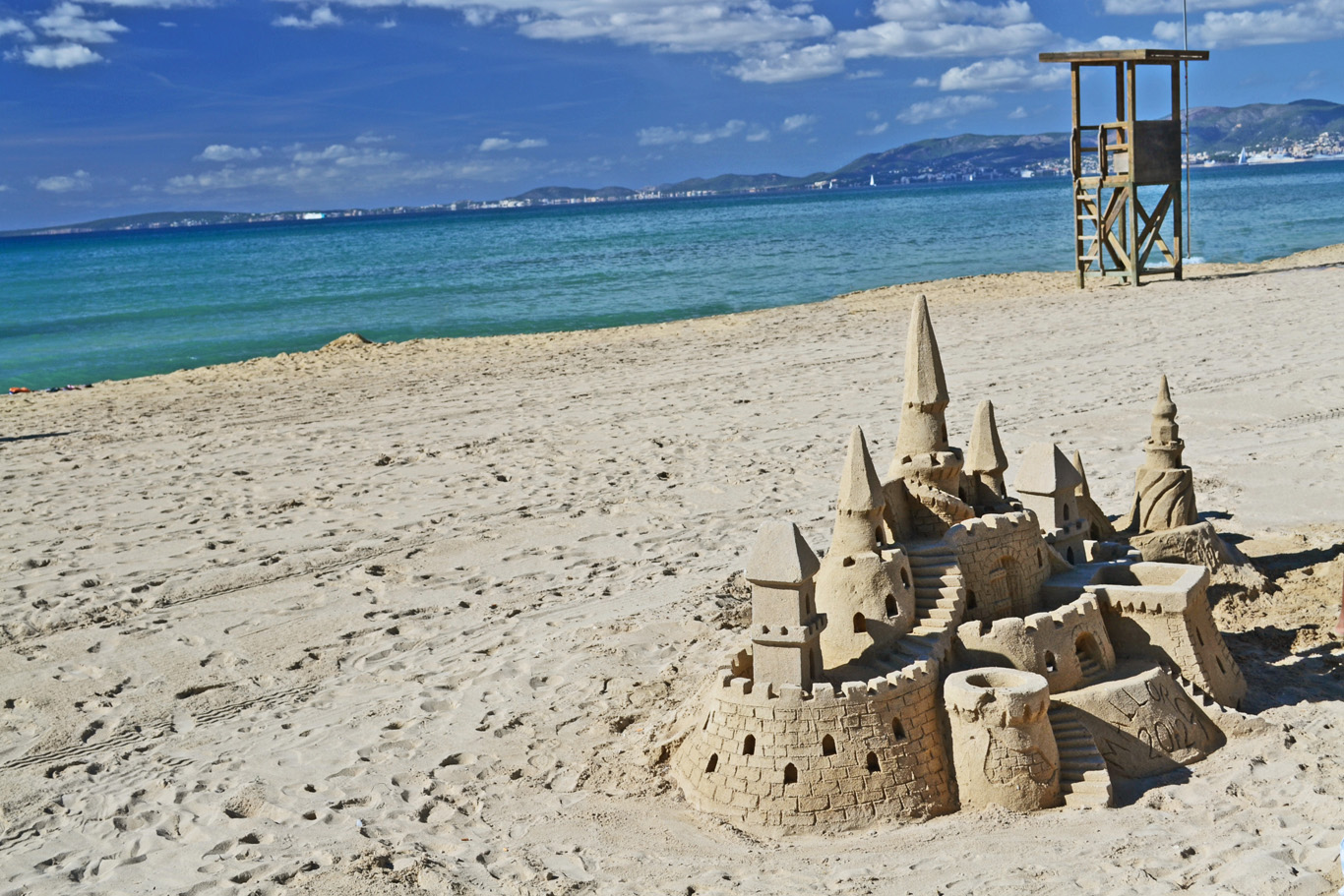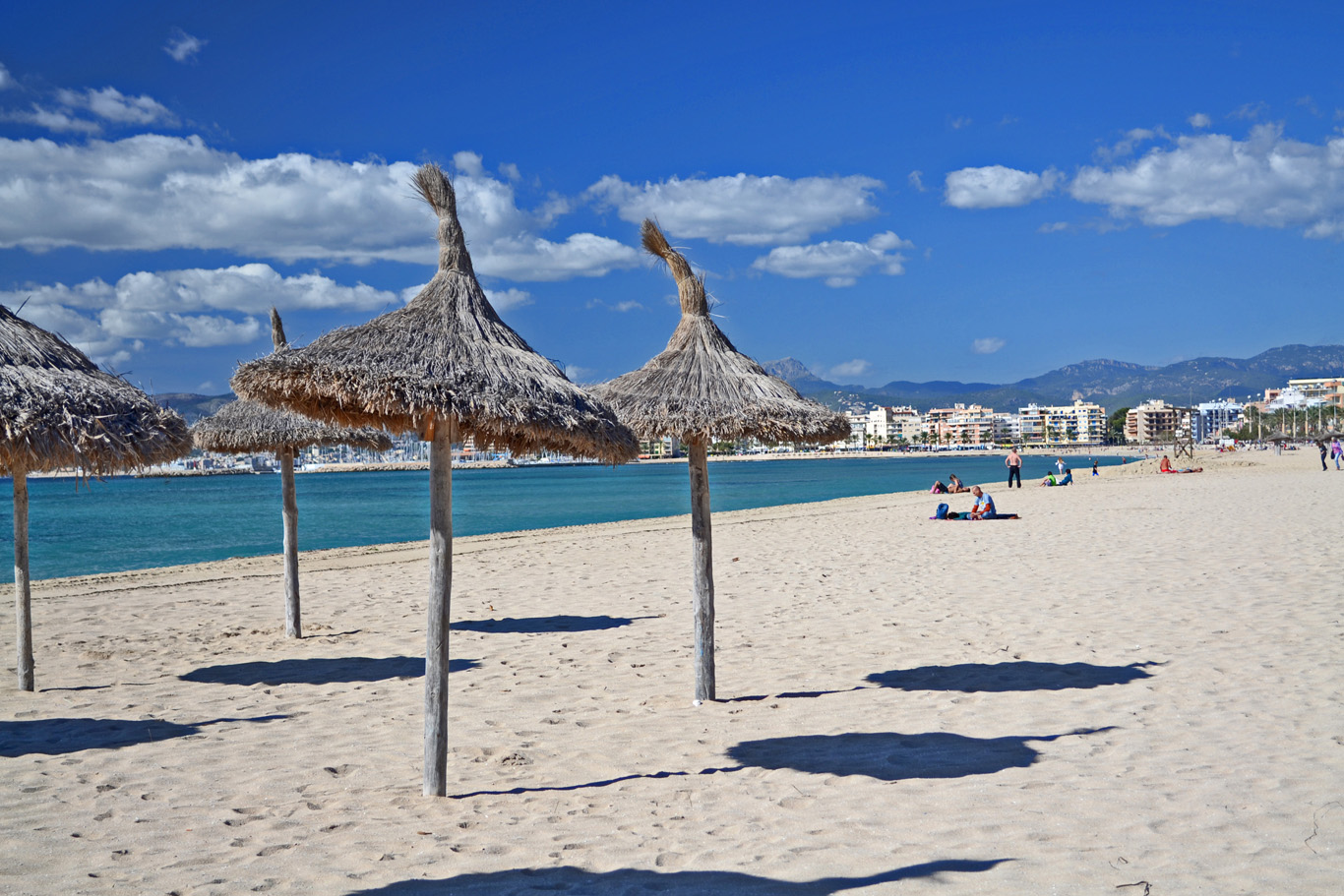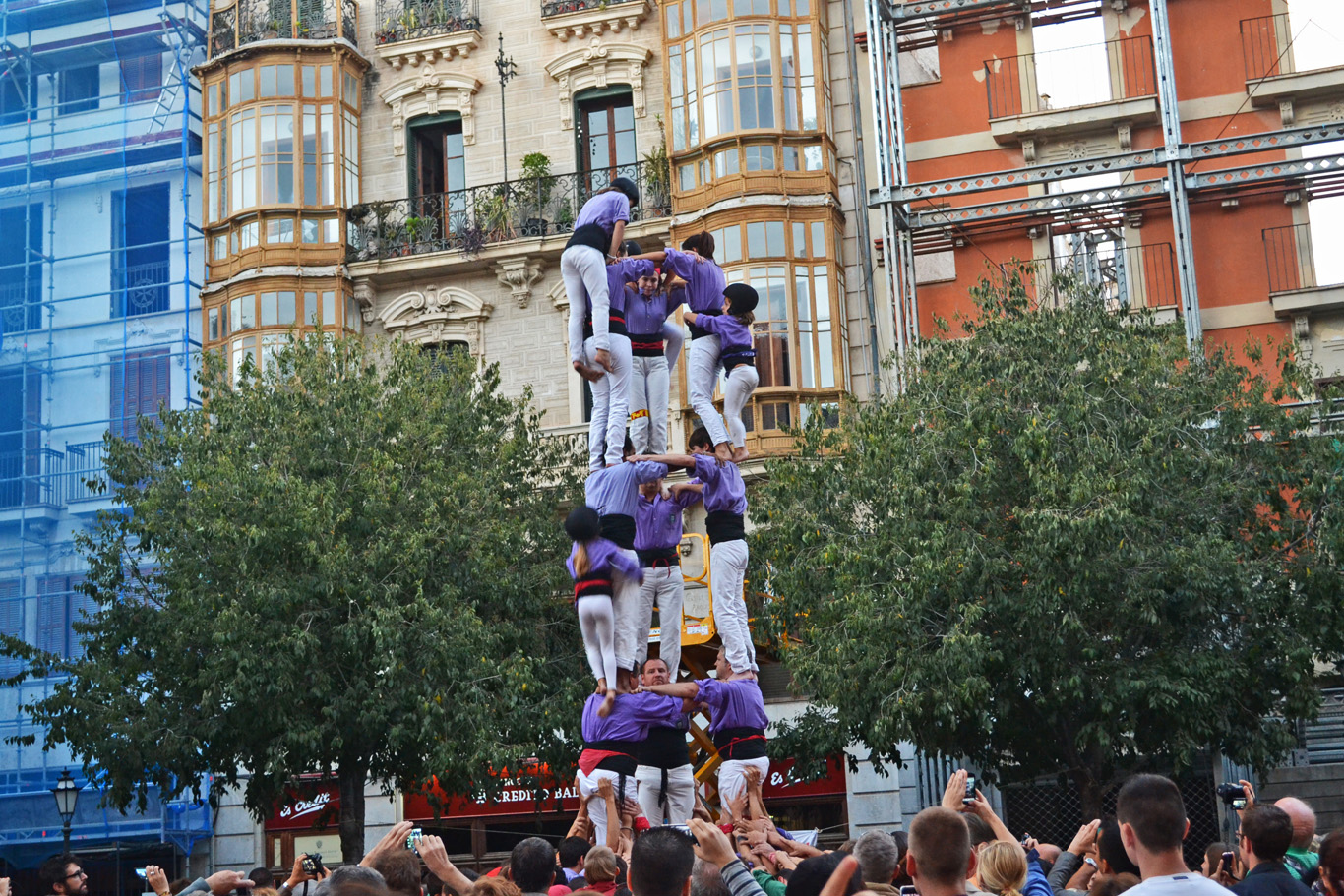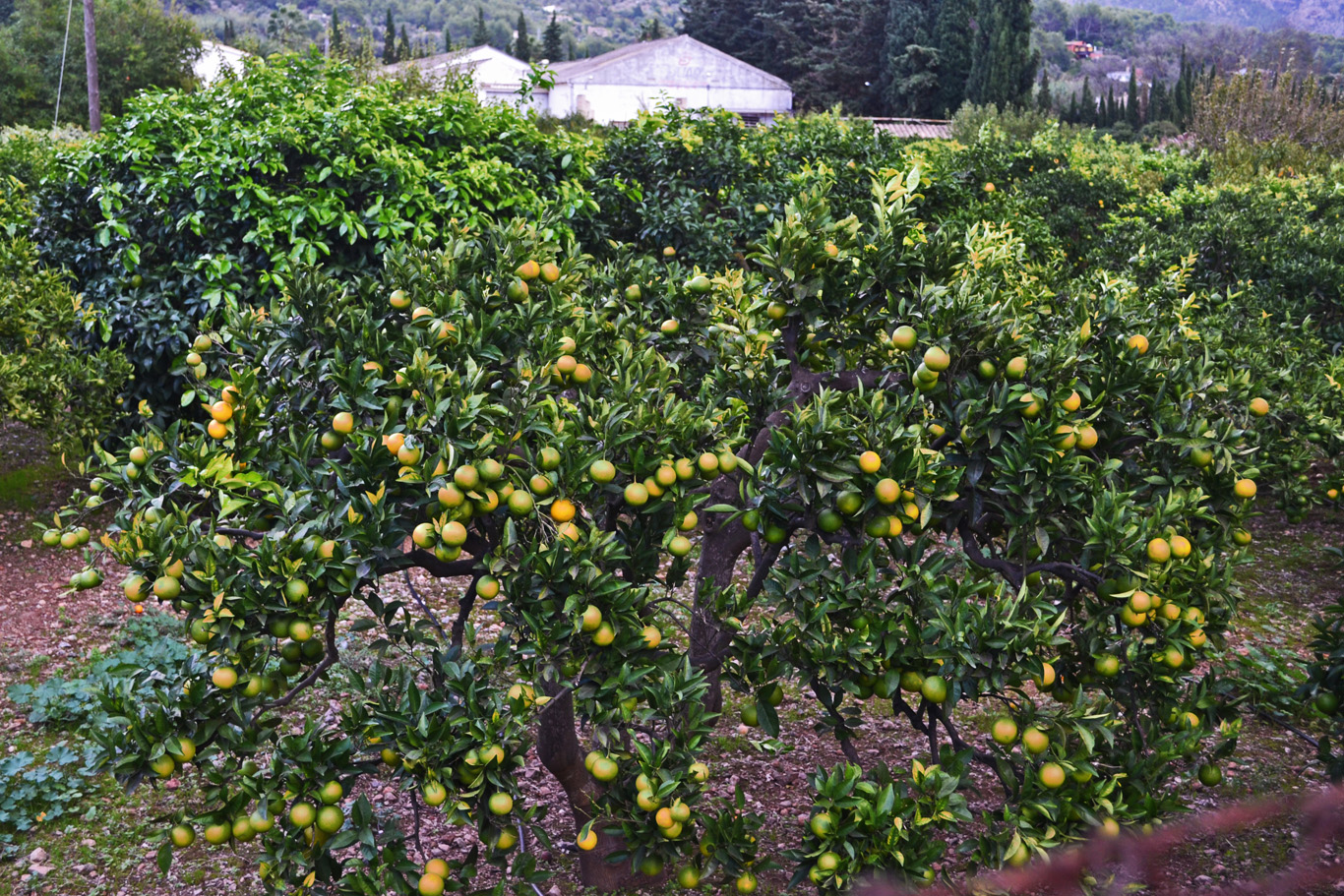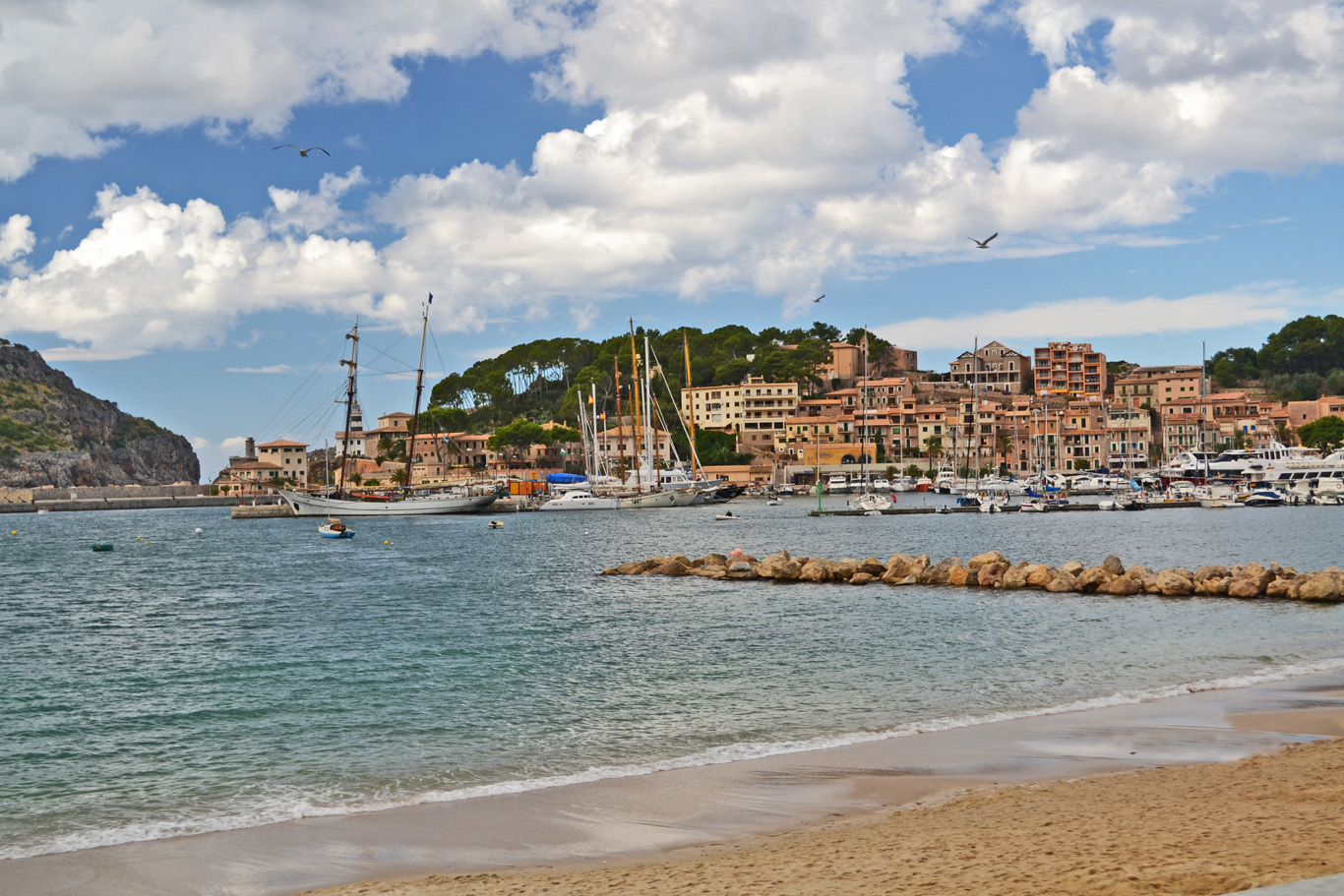Majorca (or Mallorca in Spanish), a small Island (although the biggest among the Balearic Islands) in the Mediterranean Sea, is one of the most popular tourist destinations for Europeans, especially in the summer season. However, if you decide to visit the island in the fall, the weather will still be nice and you're not going to meet as many crowds as in high season. The low season is also a perfect time for traveling around Majorca and discovering some less known spots, you will see for yourself that there's much more to the island than the 'resort-style' touristy beaches.
Mallorca
The Palma cathedral
Sand castle
Beach in Palma de Mallorca
Palma de Mallorca
How to get to Majorca
It's easy to get to Majorca from literally all large and many smaller European cities. There are many low fare flights that offer daily connections, and, especially in high season, there are also seasonal flights available from smaller cities. Majorca isn't big and it's easy to travel around. If you find a promotional fare, you can even come here for a long weekend, as I did (I found a fare for less than 70 EUR or 90 USD for a return flight!), and you will be able to visit the most important places. Or, if you have more time, you can also get there by ferry from Spain and sail through the beautiful Mediterranean Sea.
Church in Palma de Mallorca
Fountain viewed from the Palma cathedral
At the Palma cathedral
Palma Cathedral
Palma Cathedral
Human pyramid
What to visit in Majorca
Needless to say, most of the tourists that visit Majorca come here for the beautiful sandy beaches with crystal clear blue waters and guaranteed sunny weather in the summer. Low-cost budget accommodation is really cheap and widely available, so if you want to save some cash, you have many options to choose from. I rented a private room in a guest house (B&B) for only around 20 EUR (26 USD) per person per night. There are also many high quality five star hotels and spas around the beaches offering beautiful views over the Mediterranean sea. All the places described here I was easily able to visit during my 3 day stay in Majorca.
The city of Palma de Majorca
The capital city of Majorca and the administrative center of the Balearic Islands Archipelago, Palma is full of historical monuments that are witnesses of the tumultuous history of the region. The Island had been conquered countless of times throughout the centuries, first by the Romans, then fell into the rule of the Byzantine Empire, was invaded by Arabs and then Turkish Empire and finally, in 1229, reconquered by James I of Aragon who gave the city the name - Palma de Mallorca. The historical center of the city is rich in restaurants of all sorts, bakeries and cafes and narrow, cozy streets. Its architecture has mixed Roman/Muslim/Christian influences. Apart from the city center, visit the harbor, Bellver Castle, built on Muslim site, and the beautiful Palma Cathedral. In the fall, during the festivals, in Spanish cities, performers create 'human pyramids', an amazing show I was lucky to come across while strolling down Palma's streets. The city is not too big, one day should be enough for visiting the most important places.
The Palma Cathedral
The Palma Cathedral (known also as La Seu) is the most popular and spectacular attraction of Palma de Mallorca. Its construction had begun in 1299 after James I of Aragaon conquered the island, but it was not completed before 1601. The cathedral was built in the Catalan Gothic style. Both, the size and the architectural details are really impressive. It lies on the Roman citadel overlooking the Mediterranean Sea, where after the Arab invasion, a Mosque was built to be later destroyed by Christian troops. The Cathedral is easily accessible both from the center of Palma and hotels and resorts along the beach by public transport.
Ferrocarril de Soller
Ferrocarril de Soller is the railway connecting the city of Palma with the town of Soller in the north of the island. The construction was completed in 1912, and since then the trains have been running between the two towns. The journey is quite long and slow considering the distance (around 30 km or 19 miles) but it's a trip that takes you back in time. The old-style wooden trains provide an unforgettable view of the highest mountain ranges on the island. The journey itself is a great attraction. The trains run 5-7 times a day depending on the season. The price of a return ticket from Palma to Soller is 19.50 EUR (25 USD).
You can find full timetable and prices on the Ferrocarril de Soller official website: http://www.trendesoller.com/en/cms.php/Timetable_and_Prices
Soller seen from nearby hill
Mountains near Soller
Orange grove
The old style Ferrocarril de Soller Train
View of the mountains from the Ferrocarril de Sorrel train
Soller
Soller is a small town on the north west coast of Majorca. You get here by the old-style railway Ferrocarril de Soller from Palma. It's easy to walk around Soller and admire the extremely narrow streets and stone buildings surrounded by the mountains. The area is also rich in agriculture, you will see many lemon and orange groves around. In the center of the town, there's the beautiful Saunt Bartomeu Church that was erected in 1236. Some other changes to the interior were introduced later, in the seventeenth century. While strolling through Soller, you must try some local delicacies which are simply delicious. There are many lovely restaurants in the city square and the town of Soller is not as crowded as Palma or the Port de Soller.
Port de Soller
Port de Soller, the port of Soller is located around 3 km (1.85 miles) from the town. It's more touristy than Soller but the views of the coast, the port, hills and cliffs surrounding the area are wonderful. There's also many restaurants too choose from here. While there, take a walk up the hill in the opposite direction from the port and you will see amazing black cliffs and the blue Mediterranean Sea. To get to the port of Soller, you can walk or take the same as the train, old-style tram from the town of Soller. The ticket price is 5 EUR (6.50 USD) one way. Trams run quite frequently, every 30 minutes.
Coves del Drach (Dragon Caves)
Coves del Drach, the Dragon Caves are situated on the eastern coast of Mallorca. To get there, from Palma, you can take the public bus from the main station to get to the town of Porto Cristo. The town itself is beautiful with a small beach and golden rocky cliffs contrasting with the turquoise waters, especially spectacular around the sunset. The caves are located near the town, a short walk distance. They are not too large and cannot be compared to, let's say, Demanovska Caves that I saw in Slovakia. But what makes a difference is that you will be able to listen to a beautiful concert that is played on the boats floating on the underground lake. You will get a short boat ride if you want, too. The only thing that is not nice about the place is the price - 14 EUR (18 USD) per person. It's quite a lot considering the fact that the visiting lasts only around 1 hour. Unfortunately, taking photos is not allowed but you can get a glimpse of what the caves are like on the official website: http://www.cuevasdeldrach.com/?lang=en
Soller in Mallorca
St Bartomeu church
Tram in Soller
Port de Soller
Port de Soller
Port de Soller
Beach at Port de Soller
Cliffs at Port de Soller
Cliffs at Port de Soller
Porto Cristo
Porto Cristo
Porto Cristo
Sunset in Porto Cristo
Related Posts
Copying without permission is not allowed. If you wish to use any of the site's content (photos or text) or work with us, please contact us.
We welcome questions, advice, support or criticism. However, spam comments will be removed.




